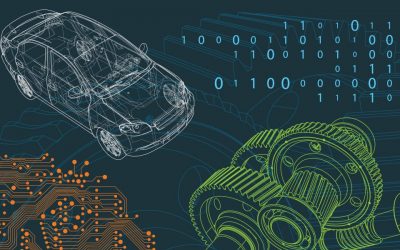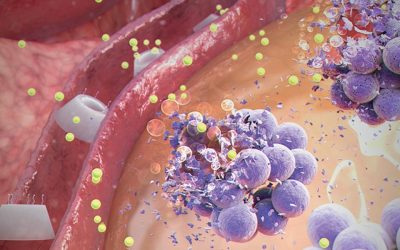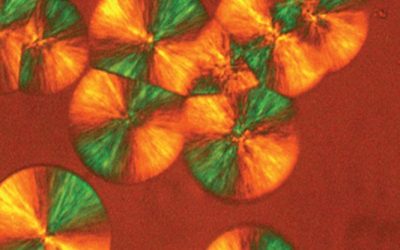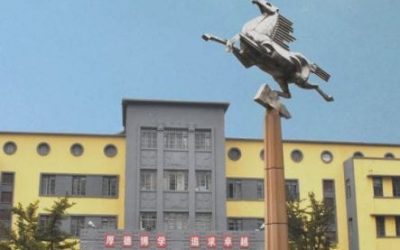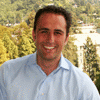 In the latest MaterialsViews interview, we talk to Prof. Marco Rolandi from the University of Washington, one of the authors of a recent essay on the use of illustrations in scientific publications. The essay is freely available, without subscription, from Advanced Materials and is and makes a nice complement to the essay by George Whitesides “Writing a Paper“.
In the latest MaterialsViews interview, we talk to Prof. Marco Rolandi from the University of Washington, one of the authors of a recent essay on the use of illustrations in scientific publications. The essay is freely available, without subscription, from Advanced Materials and is and makes a nice complement to the essay by George Whitesides “Writing a Paper“.
What attracted you to science and how did you get to where you are now?
“It is a lifestyle and a way of thinking, it’s a voice that says: here I am …, it is not about money, although some money would be nice.” No wait — that is rock-and-roll… I watched Cameron Crowe’s “Almost Famous” last night.
Apparently, I was one of those really annoying kids that would constantly hassle grown-ups with never-ending streams of incessant questions. “What is this? How does it work? Why?” I never really grew up. I keep on asking a lot of questions. Being a scientist allows me, at times, to provide some of the answers for the next generation of “annoying kids”.
Were there any strong childhood influences that lead you to this career?
My parents were a strong influence. My mom was a high school math teacher and my dad is a university physics professor. I want to clarify that I was not funneled into academia; we rarely talked about science at home. I just noticed that there were both very happy and satisfied with their careers. I started thinking: ”Perhaps, I could do something similar.”
How did you view science and scientists as a child?
As a wide-eyed kid, I would visit my dad’s lab. It seemed to me that scientists were playing, it was just a different kind of game than the one I was used to. There were all sorts of cool things: shiny boxes with green monitors, multicolored lights, hundreds of switches, even frogs and spiders. One day, a student in the lab made me breathe from a helium tank to reproduce Donald Duck’s voice (do not do this at home or in your own lab). I thought: “This is it! I want to do this [science not the DD voice] for the rest of my life.”
What would you have done if you had not taken this career path?
My first dream was to become a cave diver — there are caves with prehistoric artifacts close to where I grew up. It’s a good thing that I did not become one, because I later discovered that I am slightly claustrophobic. In junior high, I started tuning mopeds as an aspiring mechanic. In high school, I wanted to become a professional diver and fix petroleum rigs. Ultimately, I love the ocean, so probably something that involves being close to the water.
What motivated you to choose a career in academia instead of industry?
I never worked in industry so it is hard to compare. In academia, I like being independent and free to choose the research topics I am interested in. I love interacting with students both in my lab and in the classroom. It is beautiful and rewarding to see students grow as scientists and mature as human beings as years go by.
What do you enjoy most about your work?
I learn something new and exciting everyday. I have the honor to interact with really smart people.
What is your biggest passion outside of science?
My wife, of course. I also love the ocean and the sea. In the ocean, nature is at its best. I love surfing, scuba diving, free diving, and fishing. I also enjoy modern and contemporary art. With all these activities, I stop thinking about anything else and simply cherish the moment. My mind tends to wander a lot; it’s good to slow it down at times. I also love good food and good wine; it comes with being Italian. OK, now this is a long list. It was passion(s) with an “s” right?
Alongside your research, you are increasingly interested in the presentation of science, how did this develop?
When I started working as faculty, I noticed that I was spending quite some time explaining to my students how to prepare figures for a paper or a presentation. I realized that, apart from experience, I had no qualifications in the matter. I also could not find any appropriate resources; most design books were too specialized for us. I started thinking about whether it would be useful to organize a class to help scientists design figures. I needed to find some experts, though. This is how the collaboration with Prof. Cheng (Visual Communication Design), and Prof. Perez-Kriz (Human Centered Design and Engineering) started. Prof. Cheng and myself have presented a seminar on how to prepare figures on several occasions. Given the interest in the material, the essay is a brief summary of our seminar.
What influence do you believe/hope your research and your work in communicating science will have?
I hope that this work can help students and early career scientists design the figures for their first paper or presentation. It took me a long time to design the first figure that was remotely acceptable and I am still learning….
What’s the coolest thing you’ve ever discovered?
Never add a fizzy multivitamin to a warmish bottle of sparkling water. At least, not on a desk cluttered with important papers.
Which of your publications are you most proud of? Which is your favorite piece of your own research?
We have two papers coming out that I am particularly excited about. The first is in Nature Communications “A polysaccharide bioprotonic field effect transistor”. We have developed the protonic counterpart to electronic devices using proton-conducting biopolymers. This publication started from an idea that was a bit “out there”. It took a lot of relentless work and a big leap of faith for my postdoc and my students. I really need to thank them for having trusted my judgment during the first year when nothing was going the right way. The second is in Advanced Materials “A Chitin Nanofiber Ink for Airbrushing, Replica Molding, and Microcontact Printing of Self-assembled Macro-, Micro-, and Nanostructures”. It has a really long title, but it is about chitin nanofiber nanofabrication. Chitin has potential use in biomedical devices, but chitin is a very difficult material to work with. We have demonstrated that, with the right solvent, chitin is amenable to several inexpensive soft-lithography strategies. I hope some of these strategies can help chitin device fabrication in the future.
What are your short and long term plans?
My short-term plan is to fly home from DC. My long-term plan is, once I arrive home, to slice some prosciutto, and share a glass of good wine with my wife.
What do you see as the biggest challenges facing the scientific community?
Striking the right balance between applied and translational research, which have an immediate benefit to society, and basic research, with a less predictable long-term impact. Basic research contributes to the advancement of human knowledge, which, I am convinced, is humanity’s greatest asset.
What do you see as the most important scientific achievement of the last 100 years?
There are so many. It’s hard to choose. Quantum mechanics for the impact on the scientific thought as a whole. The transistor for shaping modern society. And the Atomic Force Microscope for the impact on current nanoscale science and certain aspects of biological imaging. I am starting to learn about biological proton conduction. The mechanism of oxidative phosphorylation and the Krebs cycle are fascinating.
Finally, what should scientists aspire to?
Becoming rock stars? Just kidding…. I do not feel I am in a position to say what other people should aspire to. However, this is what I aspire to: I try to do something that I enjoy doing and I do it as well as I can. I believe, perhaps naïvely, that any legitimate profession done well contributes positively to society and the well being of humanity. A very very small contribution in my case.












